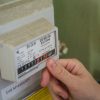
How to Read Your Electricity Meter Correctly
For household consumers who want to monitor their energy consumption, it is equally important to read an electricity meter. Electricity bills often leave people scratching their heads, in no small part because they don't really know how to read meters. This guide discusses the best way to unravel the process by providing clear steps to help you track your electricity usage using methods that work best for you.
Electricity Meter Types
The types of electricity meters used to measure electricity vary; they are measured in different ways. These can often be digital, dial, smart, and prepayment meters. Digital meters show numbers, allowing for a clear indication of the readings. Dial meters, in contrast, provide several clock-like dials to interpret — this may feel more challenging at first glance. Smart meters offer frequent monitoring and can trigger behaviour changes through in-home displays. Usage data is automatically transmitted to the providers without a need for manual meter readings. Finally, prepayment meters require users to add credit to them, presenting the existing credit score and usage.
Reading a Digital Meter
Digital meters have an easy-to-read number on display. Reading a digital meter is easy; you simply read the numbers from left to right. Just ignore all the numbers that are in red or appear after the decimal point, as they usually are fractions of unity, so they are not needed for the basic readings. If your meter has multiple registers (for peak and off-peak rates, for example), make sure that you record each one separately for accurate billing.
Interpreting a Dial Meter
Dial meters, while less intuitive, deliver readings that are just as accurate. Take a look at, from left to right, each dial. In case the pointer falls between two numbers, take note of the lower number. If the pointer directly lands on a number, check the next dial as a reference to see if it has gone past zero. If not, take the lower of those two and the dial in question. This technique compensates for the amount of differences between two dials, which creates accuracy when read.
What Are Smart Meters?
The benefit of smart meters is that they can provide real-time data automatically without the need for the meter reader to visit the household. Using a web portal or in-home display, users can gain deep insights into their energy consumption patterns and adjust their habits accordingly. Smart meters send out data automatically, but cases like confirming a bill require a manual reading. Look at the display or portal for real-time values to accomplish this.
How to Decipher Prepaid Meters
Prepayment meters function differently. Users must keep a credit balance on their meter to get electricity. Such meters have a screen that shows the balance left and the consumption. Simply go to your prepayment meter, read it by looking at the display screen, and check the figures for balance and usage. Knowing the energy consumed and the remaining credit can help manage energy expenses.
Helpful Hints to Avoid Incorrect Readings
Readings need to be accurate in order to manage energy effectively. Monitoring the meter on a routine basis will pick up any discrepancies quickly enough to avoid being hit with a surprise on the bill. Taking the readings at around the same time every month gives a better understanding of consumption habits. Also, maintaining a history of readings goes a long way in monitoring usage trends over time and is helpful in making decisions for optimal energy efficiency.
Advantages of Tracking Usage
Monitoring your electricity usage has many benefits. It allows homeowners to detect when they are consuming the most energy and make changes to lower their energy bills. Public knowledge of energy consumption also helps implement energy-saving practices that can be beneficial for the environment. Meter readings also promote better control over household bills, leading to improved financial health.
Troubleshooting Common Issues
Every so often, people encounter problems with meter readings. Make sure the display is free and clear (for digital and dial meters). However, if you continue to struggle, you should get in touch with their energy supplier for advice. With smart meters, you might find that they sometimes lose connection. You can usually troubleshoot this yourself by looking for error messages on your in-home display (or contacting the customer service line for your energy provider). If the credit runs out, prepayment meters may need to be reset or topped up.
Conclusion
Knowing how to read an electricity meter is an important life skill that can help you manage your power consumption. Knowing the several types of meters with their respective reading methods can help in proper observations, where users or individuals can know their consumption and control energy usage. This is useful for reducing energy bills and also helps achieve a more sustainable lifestyle. By embracing this information, homes can take control of their energy consumption, which results in the most significant financial and environmental savings.

















